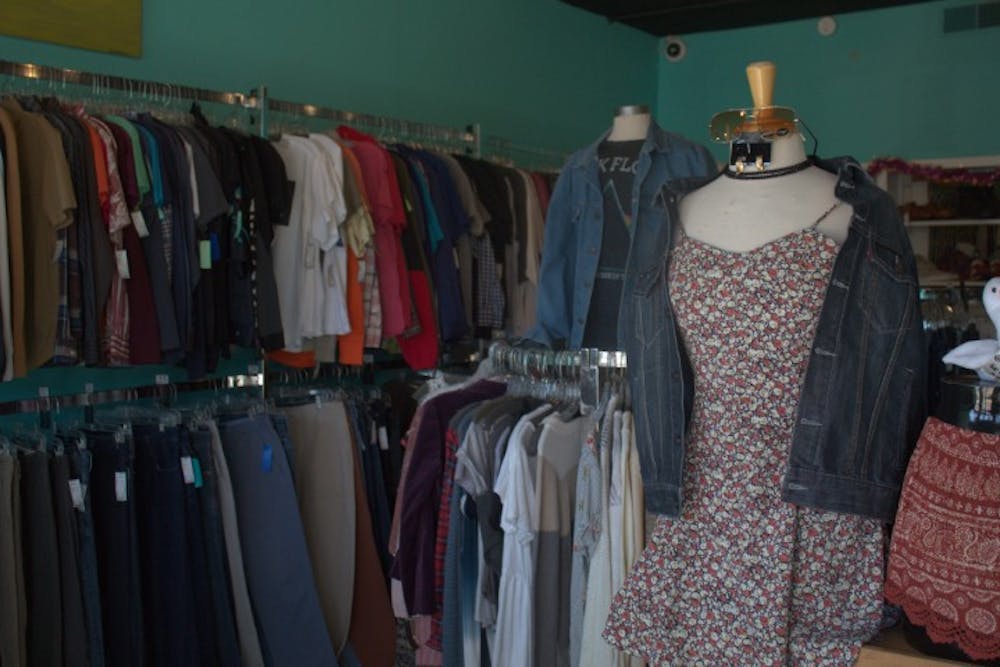The women's fashion industry needs to add sizes in between the existing size increments to truly represent an accurate range of female body types. The current inaccurate portrayal of the female body in clothing can cause damage to self-image, especially when sizes vary from store to store, or even from one pair of jeans to another.
While a wider range of numbered sizes have been integrated in select popular retail companies, simply adding sizes to either end of the spectrum is not solving the problem. The company Good American recently added a size 15 — which previously did not exist. Before, women had to choose between 14 and 16.
Adding this extra size might not seem like a great leap in inclusivity; however, many women had to return their size 14-16 jeans because they did not have the option to split the difference. The randomness within the scale of women's sizes is the result of companies choosing numbers at random to assign to specific measurements. The sizes are not an accurate representation of the female body and can shift at any instant depending on the manufacturer.
The blame falls on the woman because all she perceives is a rise or fall in the jeans' size when it really is just a difference in the manufacturer's measuring system.
“Fashion perpetuates the problem by engaging in … inconsistent and exclusionary sizing that ignores an enormous part of the population … and fosters a negative culture of judgement,” Vanessa Friedman wrote for the New York Times.
In general, sizing in men's clothing makes more sense. For men's pants, instead of arbitrary numbers put in place of sizes, measurements of the waist and inseam are used. Because the measurements are right there in front of you, this eliminates the process of wondering if this size six is different than another store's size six.
Forced to identify as a number between 00 and 16, many women become obsessed with clothing size and force themselves to remain the same size for their entire life. This sentiment becomes even more toxic when measurements of sizes change at the will of the manufacturer.
The experience of trying on a pair of jeans that appear to be your size, and struggling to pull them over your butt, can end up with a very discouraged trip home, and a worse self-esteem than you left the house with.
Body dysmorphia and eating disorders are increasingly common in college-age women — 85% of women in college perceive themselves to be overweight. Forcing your body to align with an idealized size creates a complex of wanting your body to meet the expectations of the fashion industry, instead of the fashion industry meeting the expectations of your body.
Expanding sizes does not limit itself to the numerical range: Difference in length is another unsolved issue among women’s retail. Very few companies offer pants in long or short — especially not in brick-and-mortar stores.
“Even stores that carry tall sizes generally restrict their selection,” Rachel McCarthy James said in an article on Racked.com.
Men’s pants are usually sized using waist measurements that come in an array of different inseams — what is stopping women’s pants from sizing this way as well? The perception of every woman fitting into a 28-inch standard inseam jean usually excludes anyone shorter than 5'4" and taller than 5'7".
Attempting to maintain a body that matches the ideal size is serving an unrealistic fashion industry that college women in particular have the ability to change. By demanding more inclusive sizes from your favorite brands, and buying from companies already trying to represent a diverse range of body types, we can force the industry's hand. College women are a large demographic and have a good amount of influence in this area.
Clothes that are not made for women’s bodies but are still expected to fit every woman create an inferiority complex for those who are simply in between sizes. If additional sizes and lengths are incorporated within the current spectrum of sizing, women's perception of their body image will not have to suffer at the hands of an idealized industry.

